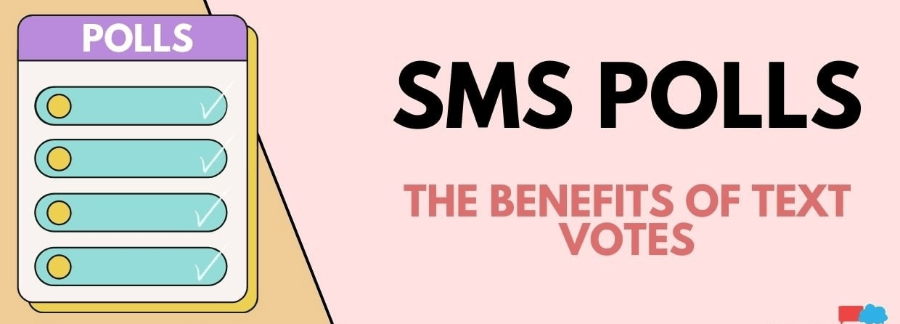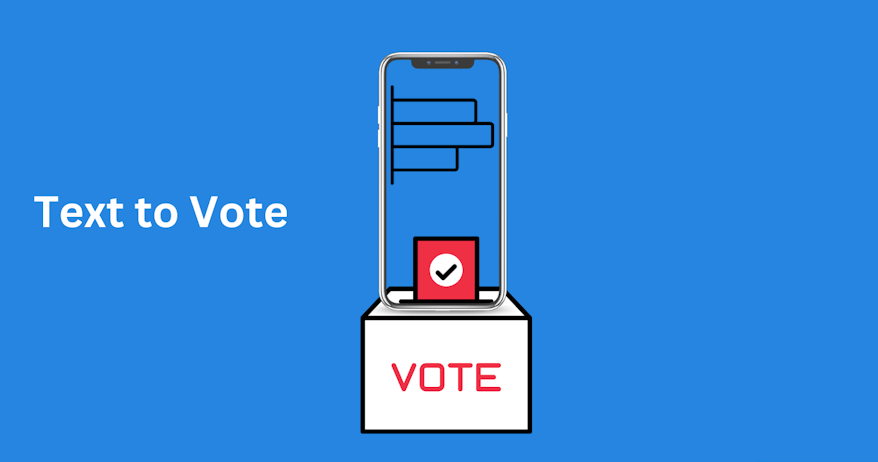📑 Table of Contents
Engaging your audience has never been more important—or more challenging. With digital content vying for everyone’s attention, creating meaningful interactions is key to standing out. SMS voting has emerged as a powerful tool to boost engagement. It’s simple, effective, and accessible to almost anyone with a mobile phone. But is it the best fit for your audience engagement strategy? Let’s explore the nuances of SMS voting, from its benefits to its challenges, and how to use it effectively.
What is SMS Voting?
SMS voting allows audiences to cast their votes or share opinions via text messages. It’s widely recognized in live TV shows, talent contests, and real-time polls. The concept is straightforward: participants send a specific keyword or number via text to register their vote.
This method of engagement is direct and personal. It eliminates the need for internet access or complex technology. It’s a digital conversation that feels personal, making it easier for audiences to connect.
How SMS Voting Captures Attention
The beauty of SMS voting lies in its simplicity. It taps into people’s natural habit of texting. Unlike other engagement tools, it doesn’t require downloading an app, logging into a platform, or navigating a website. This immediacy creates a low barrier to entry, encouraging even non-tech-savvy users to participate.
Key Reasons Why SMS Voting Works:
- Ubiquity of Mobile Phones
With over 5 billion mobile users globally, almost everyone is reachable via SMS. This makes it an inclusive tool for diverse audiences. - Instant Feedback Loop
SMS voting campaigns offer instant gratification. Whether it’s real-time voting in a contest or immediate results in a poll, the interactive nature keeps audiences engaged. - Broad Demographic Reach
SMS voting transcends generational gaps. While younger audiences may prefer flashy apps, older participants often gravitate toward text-based communication, making SMS voting a universal option. - Emotional Connection
Texting feels personal. This emotional link enhances engagement and makes the audience feel directly involved.
The Benefits of SMS Voting

SMS voting is more than a convenient tool—it’s a strategic way to connect with your audience. Here are the standout benefits:
1. Accessibility Across Demographics
Not everyone has a smartphone, but almost everyone has a mobile device capable of receiving texts. SMS voting breaks down technological barriers and ensures no one is left out.
2. Real-Time Engagement
During live events or online campaigns, SMS voting keeps the audience on their toes. People love seeing their input shape the outcome, which fuels continued participation.
3. High Open Rates
SMS boasts an impressive open rate of 98%, far surpassing email. This ensures your voting campaign reaches its intended audience effectively.
4. Cost-Effective Solution
Compared to running large-scale surveys or apps, SMS voting is cost-effective. Businesses, non-profits, and even small organizations can use it without blowing their budget.
5. Data Collection Made Easy
Every vote generates data. This data can help you understand audience preferences, trends, and even geographic or demographic patterns.
Common Use Cases for SMS Voting
SMS voting shines in specific settings where instant feedback and broad participation are critical. Here are some common use cases:
1. Television and Reality Shows
Popular talent competitions and reality shows like “American Idol” made SMS voting famous. It allows viewers to feel connected to the show and invest emotionally in its outcomes.
2. Conferences and Events
Live polls during conferences engage attendees in real-time. Organizers can use SMS voting for Q&A sessions, opinion polls, or interactive decision-making.
3. Fundraising Campaigns
Charities often use SMS voting to allow supporters to vote on fund allocation or upcoming initiatives. Pairing SMS with donation campaigns can also increase participation.
4. Political Campaigns
Political campaigns use SMS voting to gauge public opinion. It also helps candidates demonstrate public support for specific initiatives.
5. Product Launches and Feedback
Brands can use SMS voting to gather feedback on new products. For example, asking customers to vote on their favorite flavor or packaging design creates a sense of involvement.
Challenges of SMS Voting

While SMS voting has numerous advantages, it’s not without its challenges. Recognizing these limitations is essential to maximize its impact.
1. Limited Question Depth
SMS voting is perfect for simple yes/no questions or single-choice options. However, it lacks the depth needed for complex surveys or nuanced topics.
2. Carrier and Participation Costs
While SMS itself is accessible, participants may hesitate if their carrier charges for texts. This barrier could reduce the number of voters, especially in international campaigns.
3. Potential for Spam
Frequent or irrelevant voting requests can annoy your audience. Spammy campaigns risk alienating participants, undoing the benefits of SMS engagement.
4. Privacy Concerns
Collecting votes via SMS means handling user data. Without robust security measures, privacy breaches or misuse of personal data can occur, leading to loss of trust.
5. Limited Visual Appeal
Unlike app-based polling or online surveys, SMS voting is text-based. It lacks the visual appeal or interactive elements that some audiences might prefer.
Best Practices for SMS Voting
To make the most of SMS voting, follow these tried-and-true practices:
1. Keep It Simple
Craft short, clear instructions. Avoid long texts or complicated voting mechanisms. A simple “Text A for Yes or B for No” works best.
2. Incentivize Participation
Offer incentives like discounts, entry into a giveaway, or access to exclusive content to motivate participation.
3. Test Before Launching
Run test campaigns to ensure smooth operations. This helps identify technical glitches or unclear messaging before you go live.
4. Communicate Clearly
Let participants know how and when results will be shared. Transparency fosters trust and encourages future participation.
5. Follow Up Strategically
After the campaign, share results with participants. Use the momentum to engage them further or invite feedback on other topics.
Is SMS Voting Right for Your Strategy?
The decision to use SMS voting boils down to understanding your audience and objectives. If accessibility, simplicity, and broad reach align with your goals, SMS voting is an excellent choice. It’s particularly effective in scenarios where real-time feedback enhances the experience, such as live events or public polls.
However, for campaigns requiring detailed feedback, visual elements, or in-depth analysis, it’s best to combine SMS voting with other tools. By leveraging SMS as part of a broader engagement strategy, you can maximize its impact without over-relying on its capabilities.

Closing Verdict
SMS voting stands out as a quick, engaging, and cost-effective way to involve your audience. Its accessibility ensures you can reach a wide demographic, while its instant results keep people interested and invested. That said, it’s essential to balance simplicity with strategy. Use SMS voting in situations where immediate interaction matters and supplement it with other tools for comprehensive engagement.
The power of SMS voting lies in its ability to make audiences feel seen and heard. With the right approach, it can transform a passive group into an active, engaged community.
Ready to connect with your audience? Start texting your way to better engagement today!
